Marble Potatoes with Lemon-Basil Pesto Recipe (scallions and seeds)

Marble Potatoes with Lemon-Basil Pesto (scallions and seeds)
Not your ordinary pesto dish!
When we hear pesto, we think of Italy. I don't know about you, but of all the pasta recipes I've tried, this one tastes the most Italian to me. Maybe because of the aromatic scent and flavor coming from the fresh basil, the nutty- fruity taste of the olive oil, and, of course, the long-aged cheeses like Parmigiano and Pecorino.
These are the classic ingredients for making our well-loved pesto sauce.
Despite the fact that this sauce has evolved over time and has been made into several versions, it is believed that the first pesto was created in Genoa, Italy's northernmost region, during the 16th century to preserve an abundant supply of basil. The term "pesto," which means "pounded," refers to a paste made by pounding together a variety of flavorful ingredients, including cheese, nuts, garlic, salt, and olive oil. Basil is the main aromatic ingredient.
Having said that, we also created another pesto sauce variation. This time, the only key ingredients are basil, olive oil, and lemon juice—to give it a more summery and citrusy flavor. But instead of using it for our typical pesto pasta, we are giving it a new spin by adding it to flavor our marble potatoes instead.
What is Marble Potatoes with Lemon-Basil Pesto (scallions and seeds)
This recipe is inspired by Liguria, a famous Italian region known for its iconic dish, "Pesto Alla Genovese," referring to the way in which they prepare their pesto the traditional way. The best way to eat pesto in Italy is, of course, with pasta. Sometimes they use it to flavor savory pieces of bread with tomato and cheese filling. Pesto is also a good choice to flavor your grilled meats and vegetables.
Here, I've made my own version by making it into a side dish: a simple potato salad made with marble potatoes and this citrusy, summery pesto made only with lemon juice, olive oil, and fresh basil leaves.
The procedure is extremely simple. You can prepare it the old-fashioned way by using a mortar and pestle. Alternately, you could use a blender if you want a quicker method and a more finely ground texture. But don't worry, the flavor will be just as good.
So let’s now head to the kitchen and do some choppin’, shall we?
How to make Marble Potatoes with Lemon-Basil Pesto (scallions and seeds)
Potatoes
1. Prepare marble potatoes by washing them. Rinse the potatoes several times until the water runs clear.
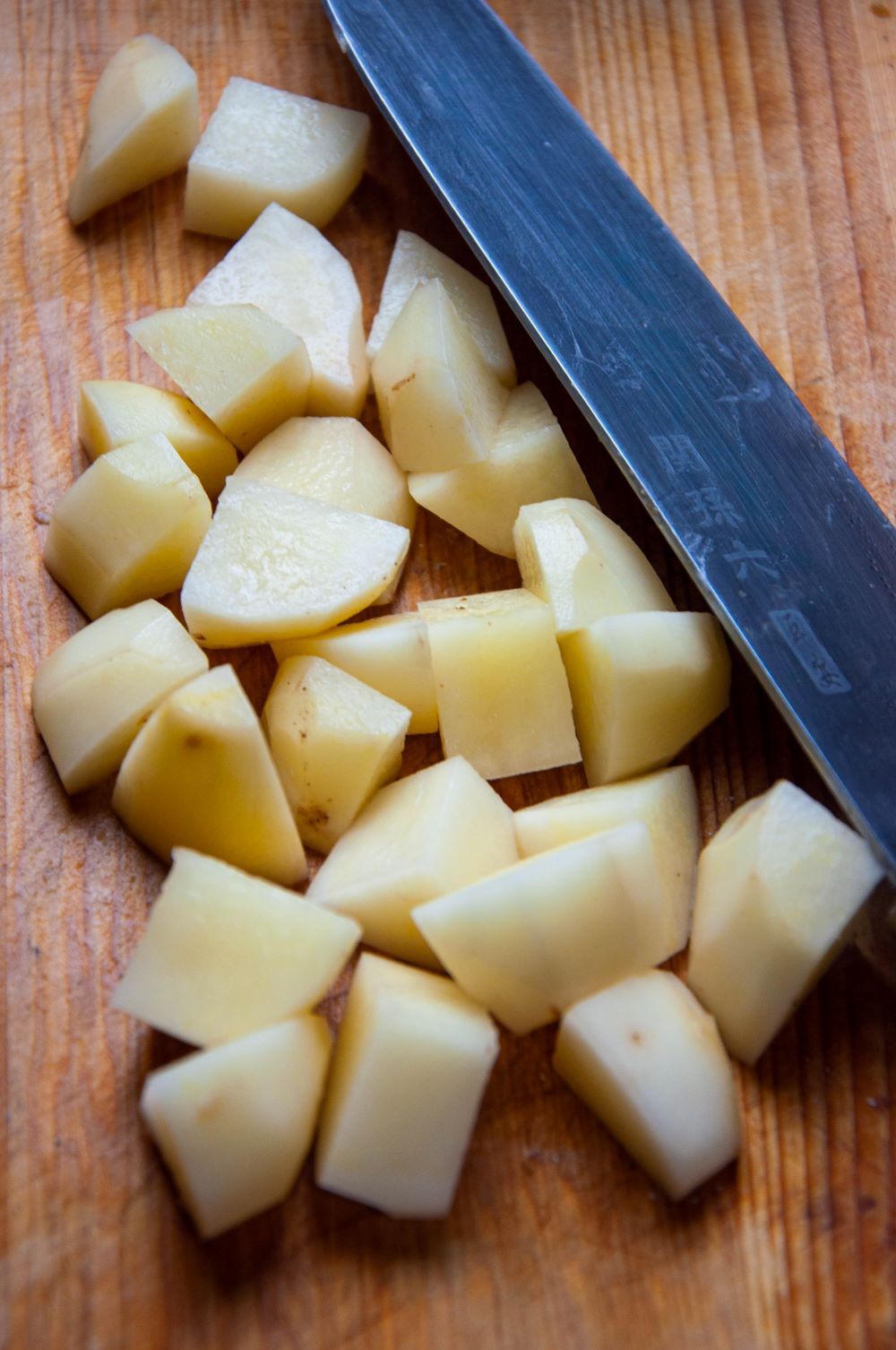
2. Place it in a large pot with cold water and bring it to a boil until soft.
3. Drain the potatoes using a strainer and then place them in a mixing bowl once they are finished cooking.
4. Allow it to cool completely for about 30 minutes after seasoning with a little salt.
Lemon-Basil Pesto
1. Using a blender, combine fresh basil, lemon juice and extra virgin olive oil.
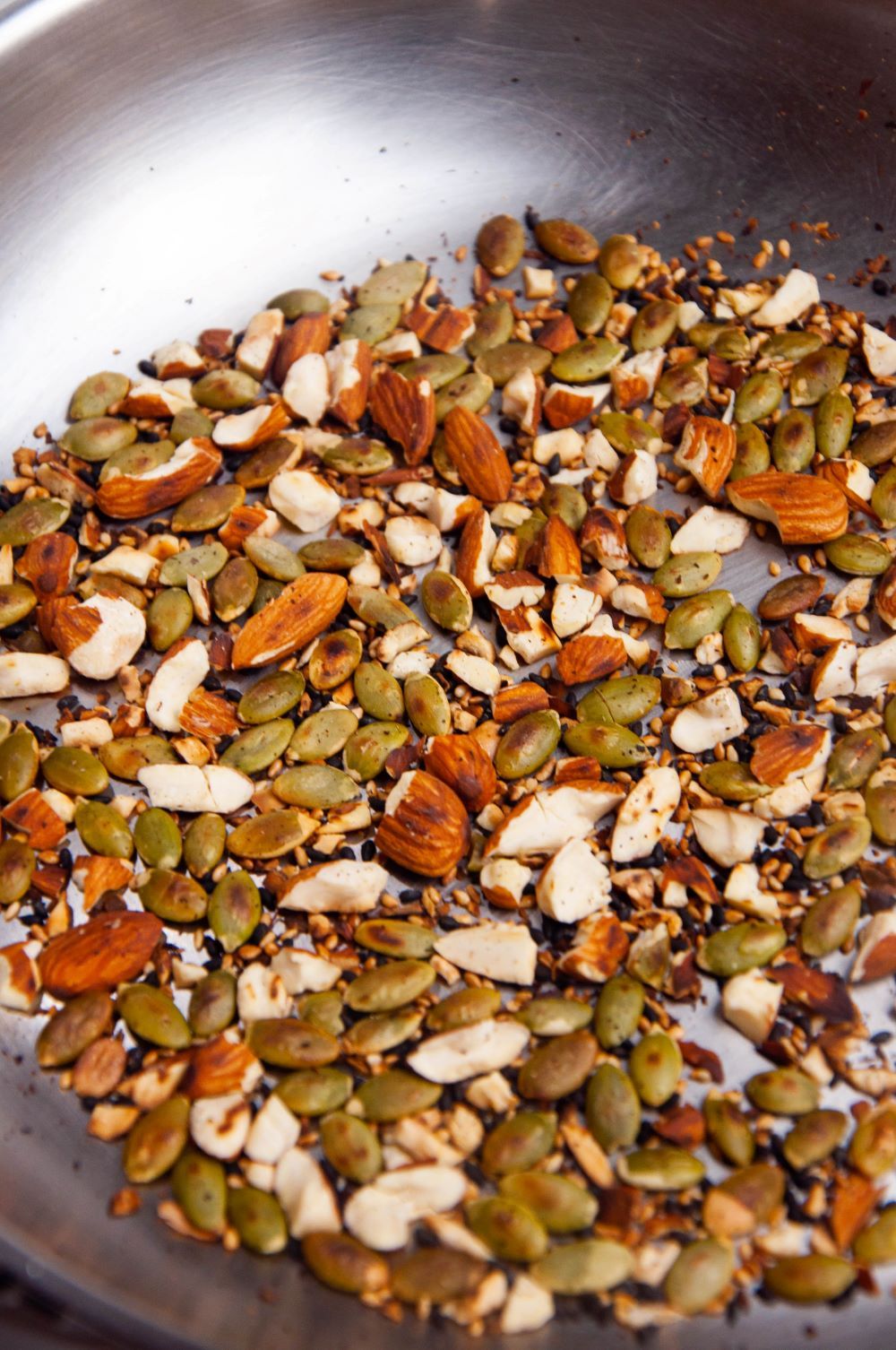
2. Mix everything together until you form a smooth paste. Add salt for flavor and continue to blend everything.
3. If necessary, add more extra virgin olive oil to help it emulsify.
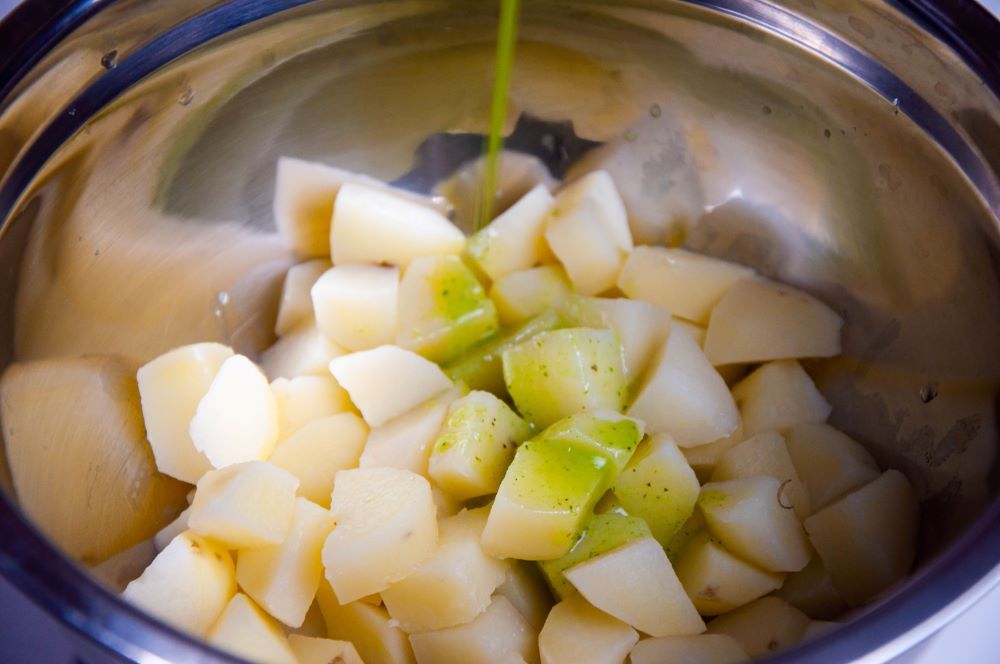
4. Once the lemon-basil pesto is ready, add it to your cooked marble potatoes and garnish them with toasted mixed nuts and fresh scallions.
5. Serve and enjoy!
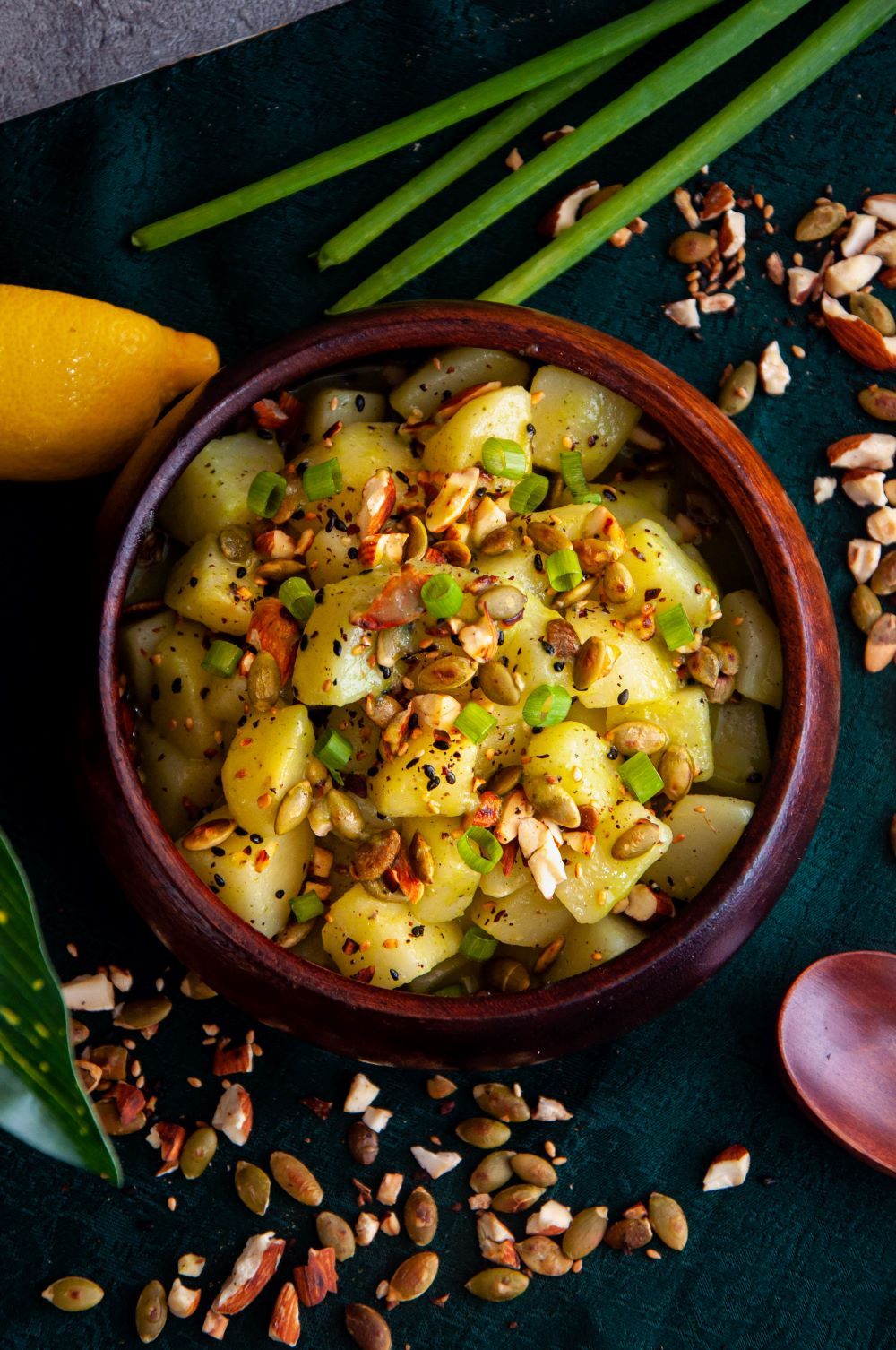
Tools
- When making this pesto sauce, you'll need a blender to combine and emulsify the paste, especially if you're making a large batch.
- Use a mortar and pestle instead if you prefer the old-fashioned method. However, keep in mind that you will not be able to create a smooth and emulsified pesto sauce. You will also need to divide the work into batches.
- When selecting a pot for boiling potatoes, make sure it is large enough to submerge all the potatoes in water at the same time to ensure even cooking.
Notes
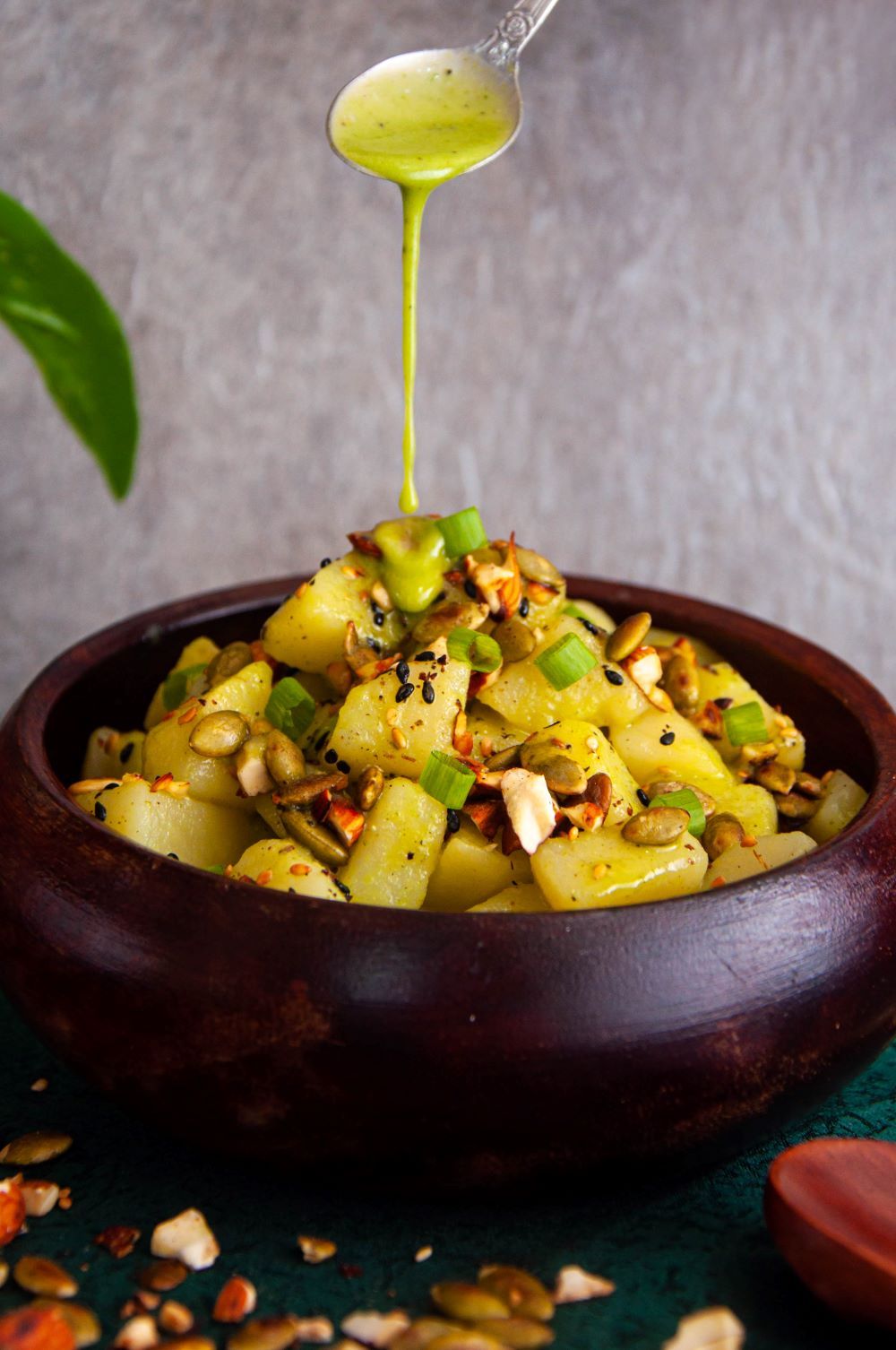
- If you are making pesto in a blender, we recommend adding ice cubes to your batch. This will help prevent oxidation of the basil leaves and will keep their green color even after blending.
- If you made a large quantity, store the leftovers in an airtight container and keep them in the refrigerator for about a week.
- If possible, avoid using plastic containers as pesto can leave behind a distinct aroma, color, and oily texture. You can use sterilized jars to ensure a longer shelf life.
- This pesto recipe can be used not only for pasta but also for pieces of bread, meats and other mixed vegetables.
